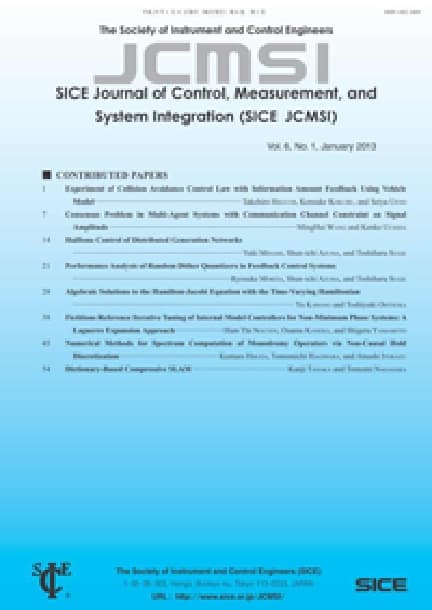Artificial Bee Colony Algorithm Based on Adaptive Local Information Sharing Meets Multiple Dynamic Environments
Ryo TAKANO, Hiroyuki SATO, Keiki TAKADAMA
pp. 1-10
DOI:
10.9746/jcmsi.12.1Abstract
This paper focuses on the artificial bee colony (ABC) algorithm as one of swarm optimization methods and proposes ABC-alis (ABC algorithm based on adaptive local information sharing) by improving the ABC algorithm for dynamic optimization problems (DOPs). ABC-alis is applied to various types of dynamic changes embedded in DOPs to verify its tracking ability in such dynamic environments. Concretely, the following five types of dynamic changes and one of the high-dimensional problem are employed as the different environments: (A) a periodic change of evaluation values of local optima; (B) a random change of evaluation values of local optima; (C) a random change of local optima coordinates; (D) a combination of two kinds of random changes (B+C); (E) a random speed change of local optima in the environment (D); and (F) a high-dimensional problem in the environment (E). In these experiments, the following three methods are compared: ABC-alis as the proposed method, ABC-lis as our previous method of ABC-alis, and speciation-based particle swarm optimization (SPSO) as the conventional method. The experimental result revealed that the following implications: (1) ABC-alis and ABC-lis can capture the optimal solution more quickly and keep a better solution than SPSO in the various types of dynamic changes; (2) from environments C, D, and E, ABC-alis can adapt to the random change of local optima from the viewpoint of the evaluation value, coordinates, speed, and all of them; and (3) ABC-alis can maintain its performance even in the high dimensional environment F.









